Homemade Naan
This post may contain affiliate links. Read my full disclosure policy.
Learn to make irresistibly soft and pillowy naan in your own kitchen with this simple recipe – it far outshines any store-bought version.
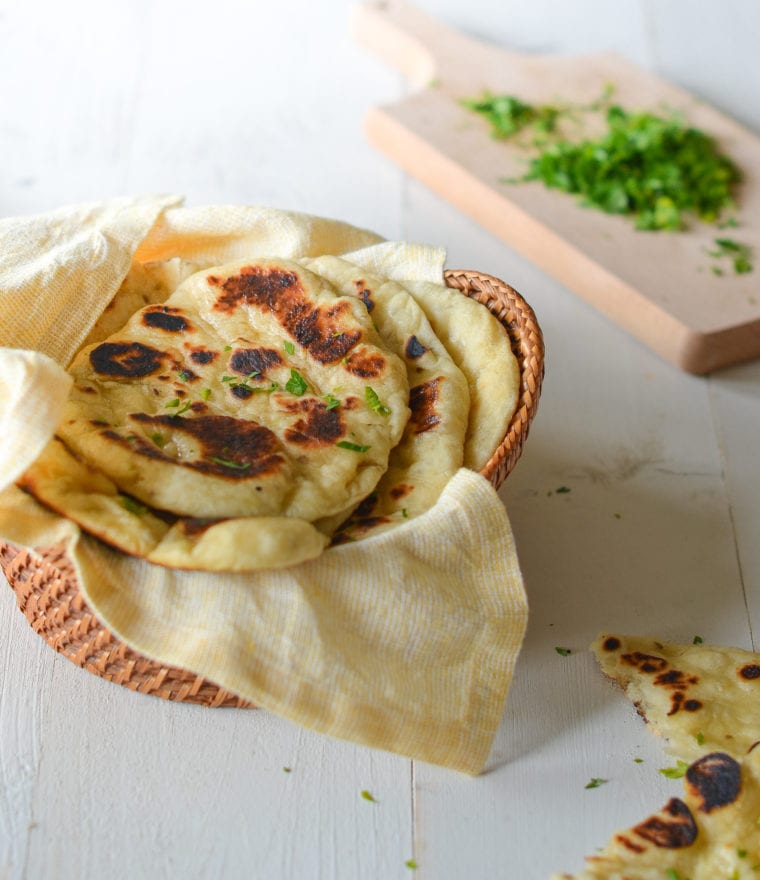
Naan is a soft, pillowy flatbread traditionally baked in a tandoor. This cylindrical clay or metal oven, prevalent in restaurant kitchens across the Indian subcontinent, the Middle East, and Central Asia, reaches scorching temperatures, imparting a distinct smoky flavor to foods. Naan dough, enriched with yogurt and olive oil and flavored with anise seeds, is rolled out and slapped against the tandoor’s inner walls, where it adheres and bakes swiftly over open flames. Once done, it’s brushed with melted butter.
In this recipe, I’ve replicated the tandoor’s high heat and charred flavor using a very hot cast iron skillet or nonstick pan. Making naan at home is so worth the effort—aside from the rising time, it’s quick to prepare, and the taste is leagues above store-bought versions! Paired with saucy dishes like chicken curry, butter chicken, or chicken tikka masala, homemade naan truly shines.
“The dough came together easily, was nice to work with and cooked up beautifully… My search for the perfect naan bread is over—this recipe is the best!”
What You’ll Need To Make Naan
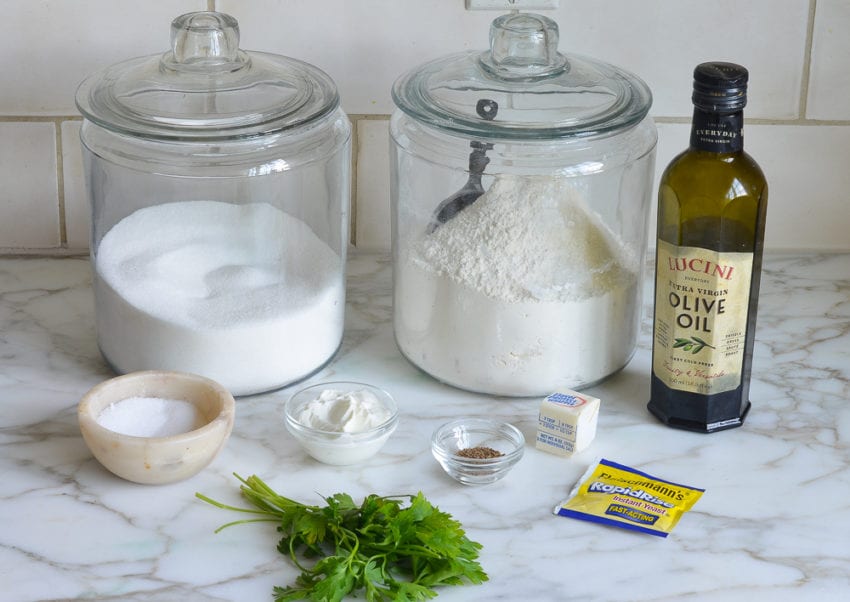
As you can see, the ingredients are very basic. The yogurt and olive oil add a bit of tang and richness. The anise seeds add just a hint of licorice flavor; feel free to leave them out, or replace them with nigella seeds (which have a subtle onion flavor), poppy seeds, or sesame seeds.
Step-by-Step Instructions
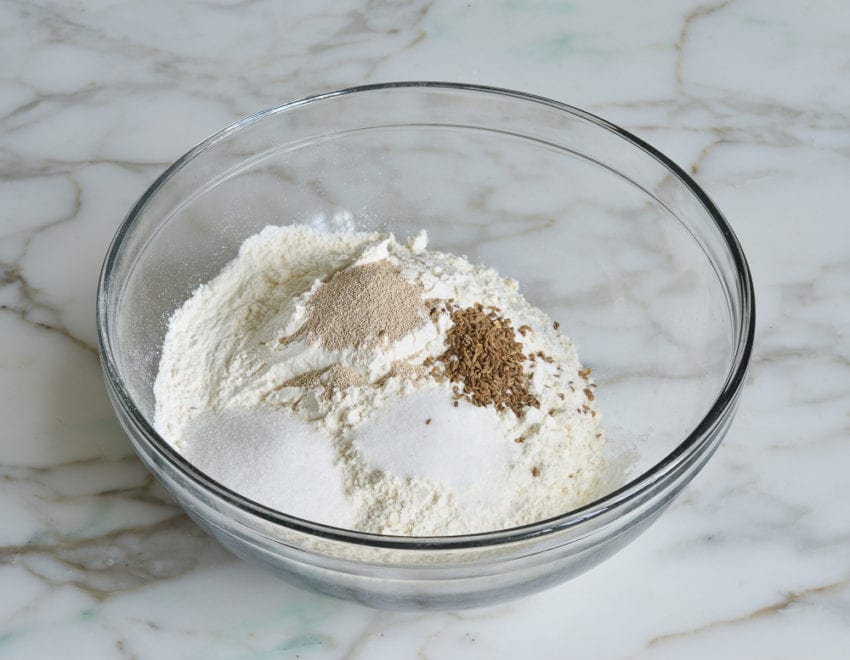
Begin by combining the flour, yeast, sugar, anise seeds and salt in a large bowl, then whisk to combine.
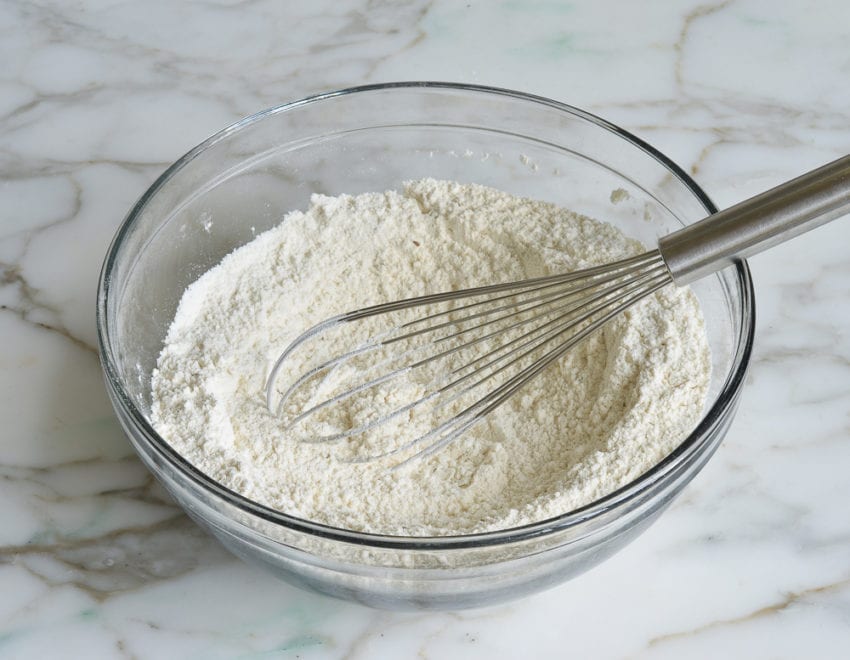
Whisk together the yogurt, olive oil, and warm water.
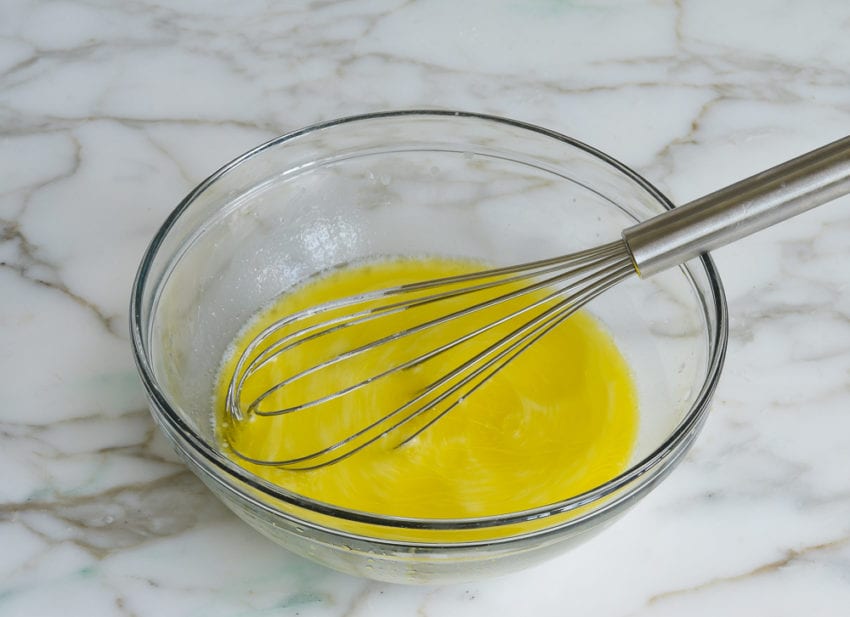
Add the liquid mixture to the dry ingredients.
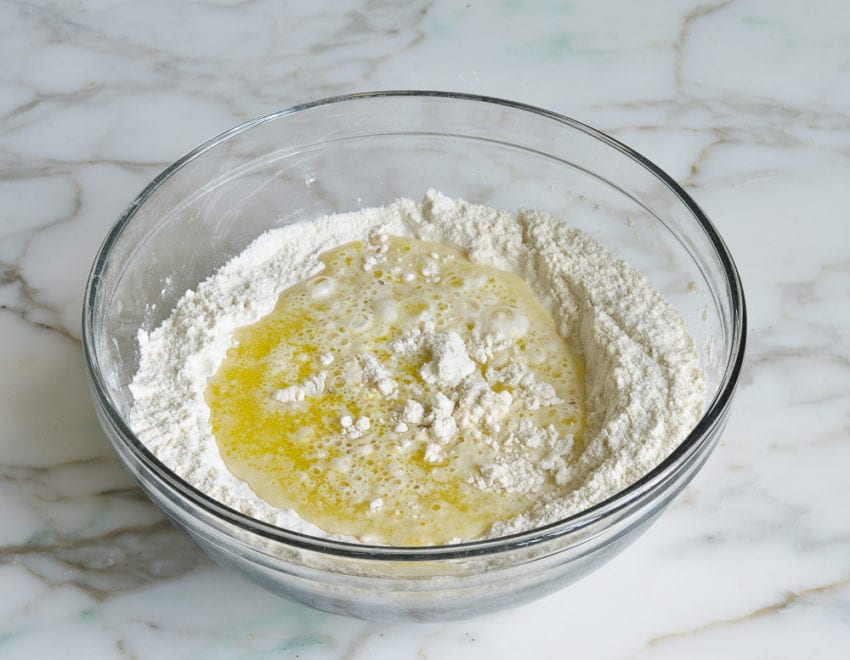
And stir with a fork until the dough comes together.
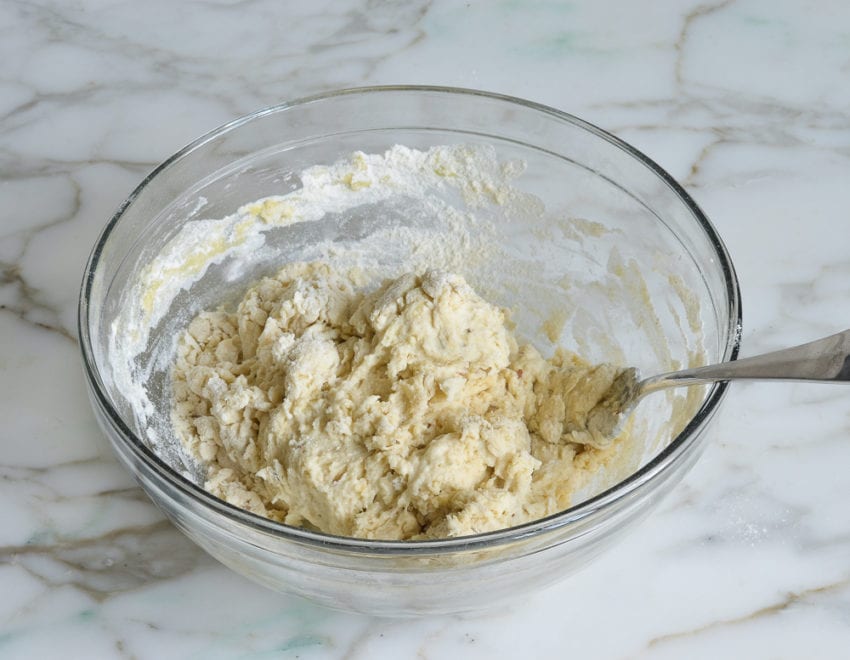
Dust your hands with flour and knead into a soft, sticky ball.
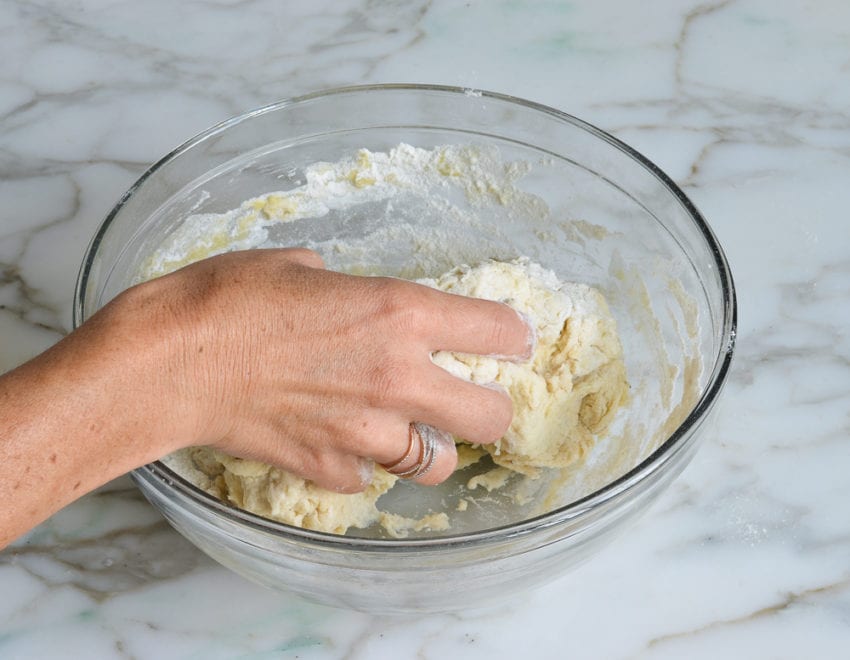
Cover with plastic wrap.
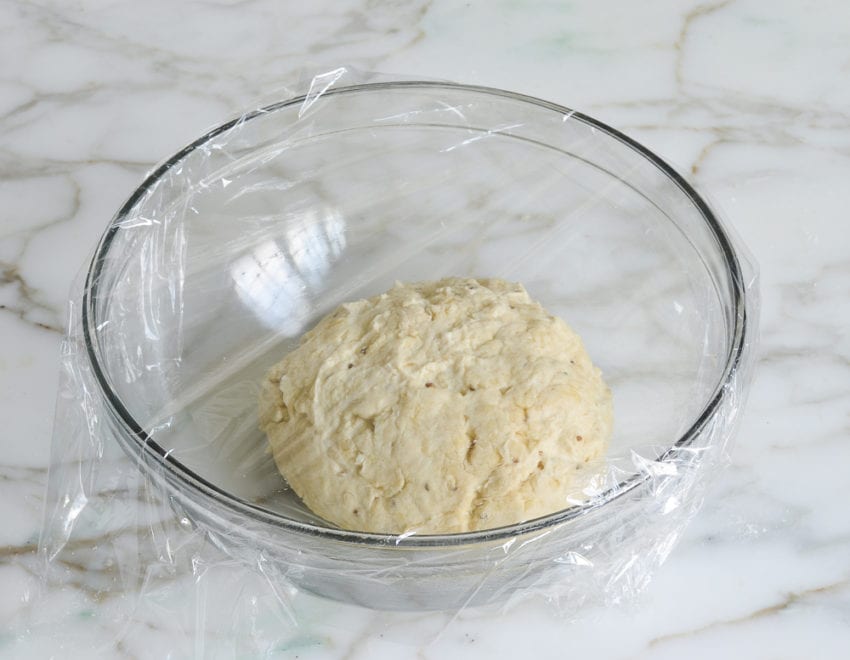
Let rise in a warm spot until about doubled in size, 1 to 1-1/2 hours. Hint: the warmer the spot, the faster it will rise.
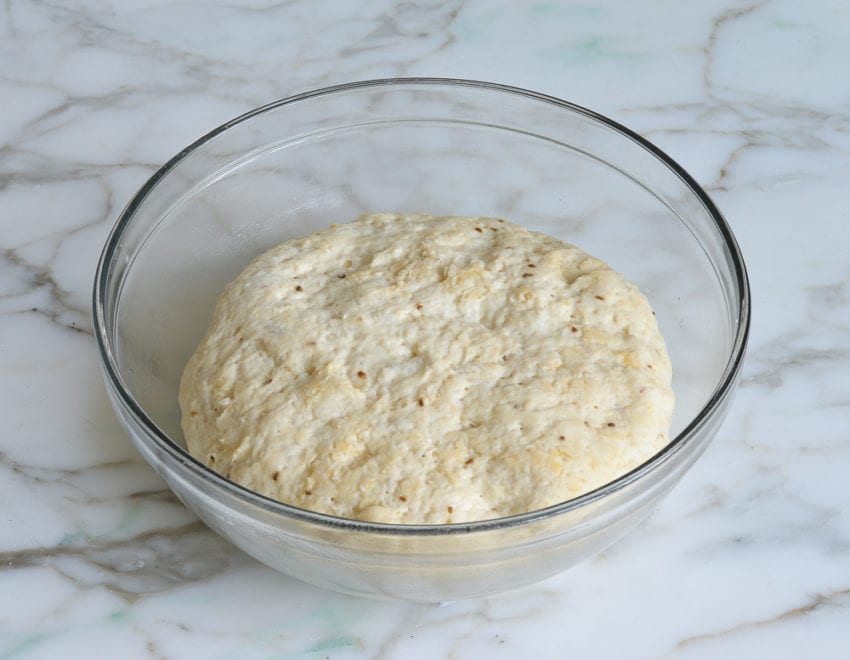
Fill a small bowl with flour. Dust some of the flour onto a work surface. Dump the dough on top and sprinkle the dough with more flour.
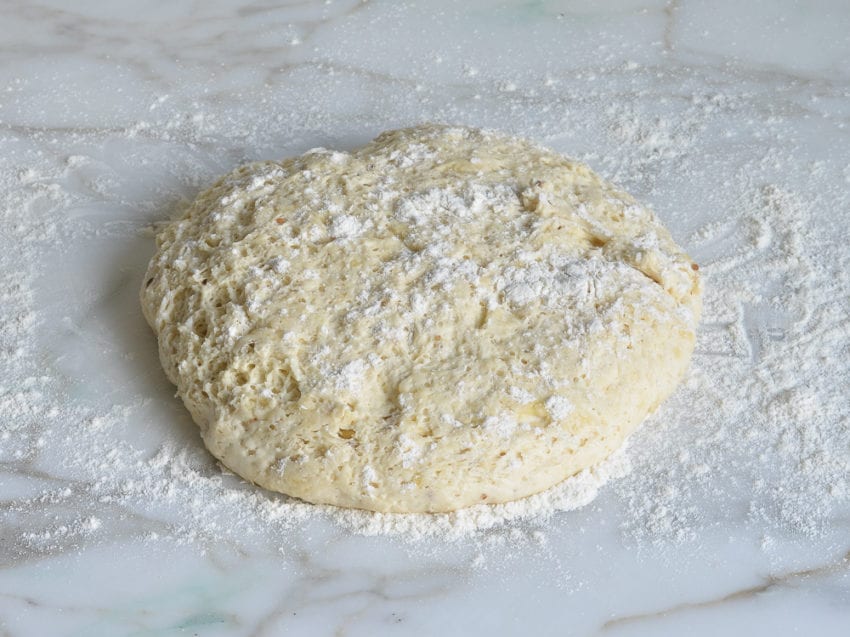
Shape the dough into a rectangle, adding more flour as necessary so it doesn’t stick.
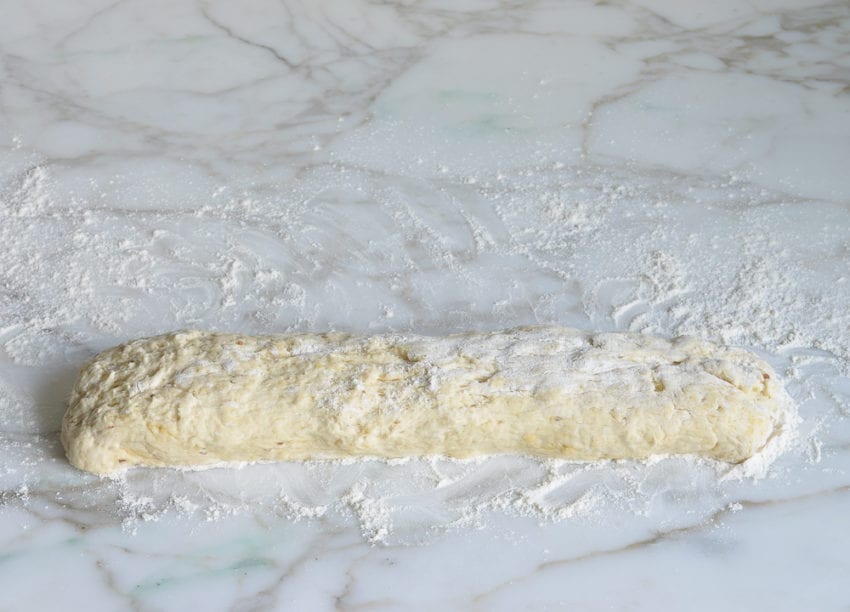
Then, divide into six equal portions.
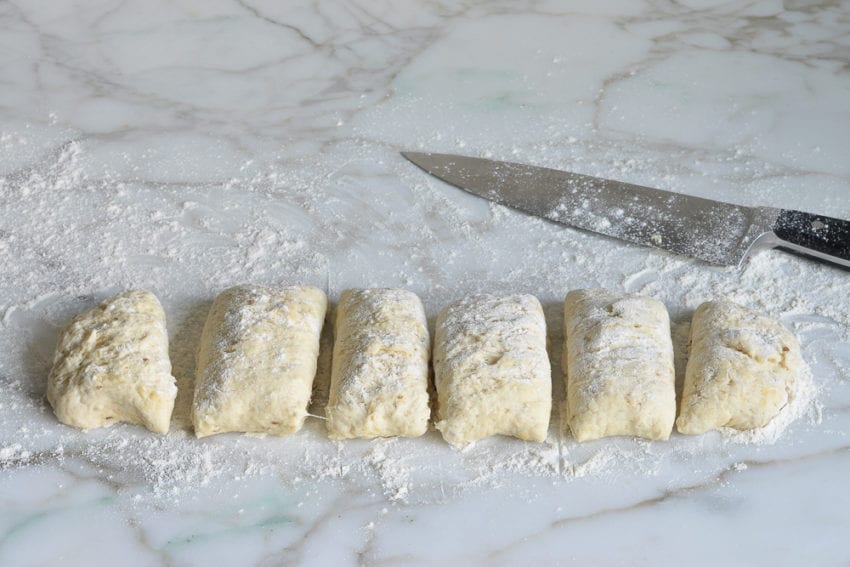
Heat a cast iron or heavy nonstick skillet over medium-high heat until very hot. While it heats, roll one of the dough balls into an oval about 1/8-inch thick.
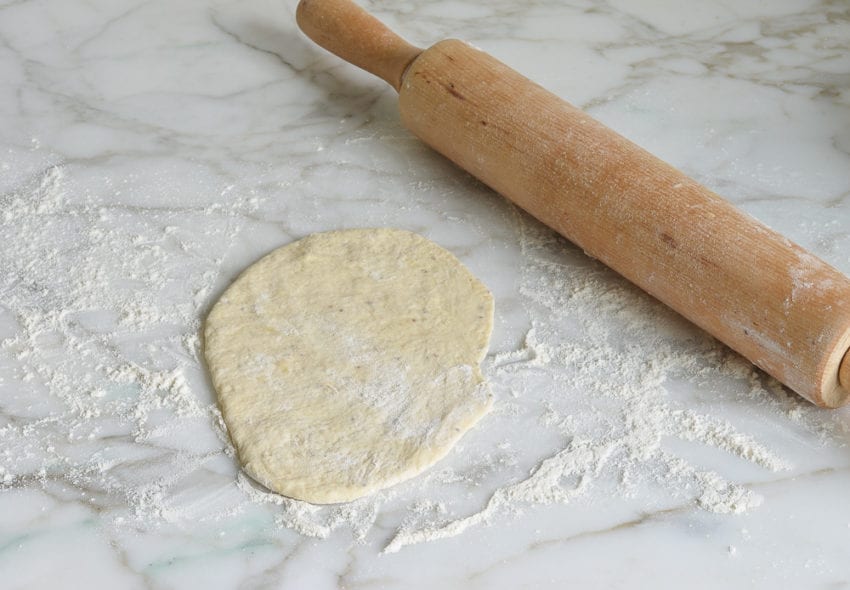
Place the dough in the hot, dry skillet and cook until the surface is full of air bubbles and the bottom is browned and blistered in spots.
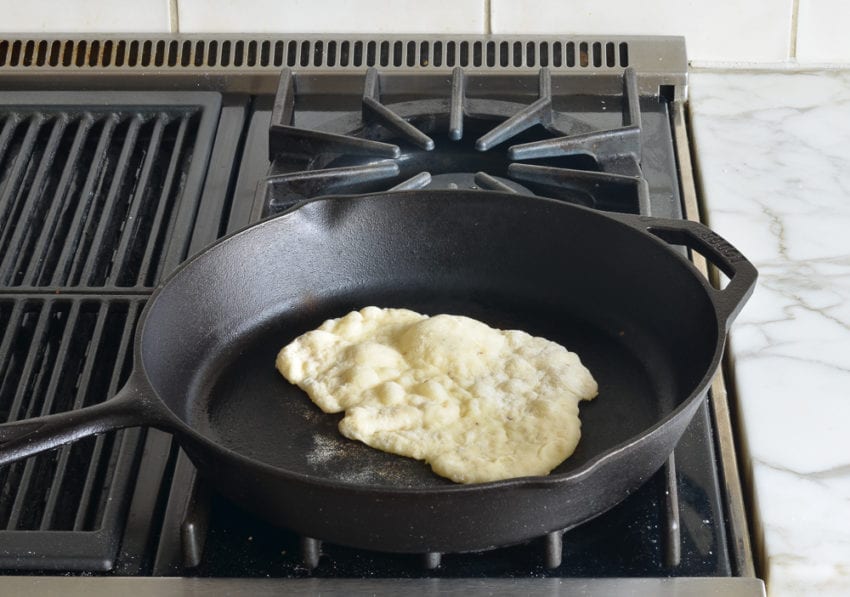
Flip the naan and cook a few minutes more.
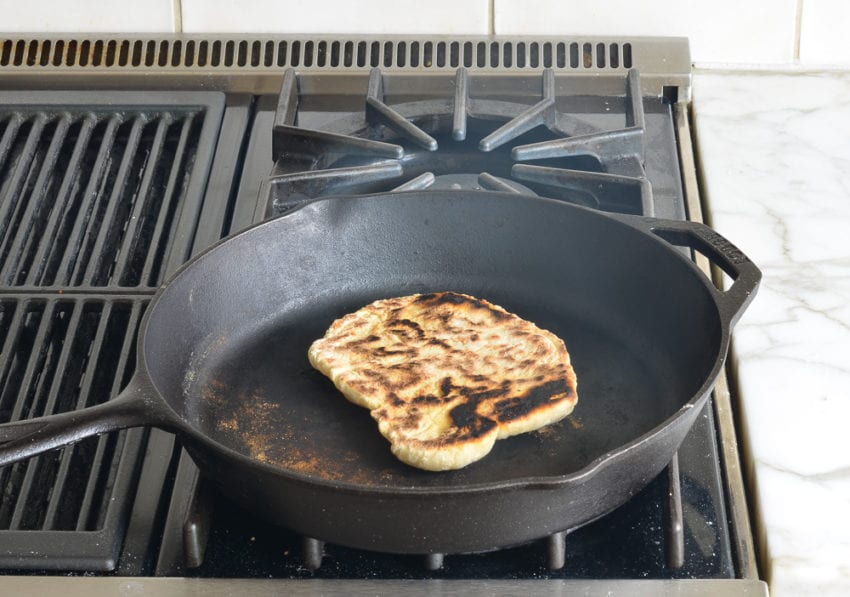
Brush the cooked naan with melted butter, and repeat with remaining dough balls.
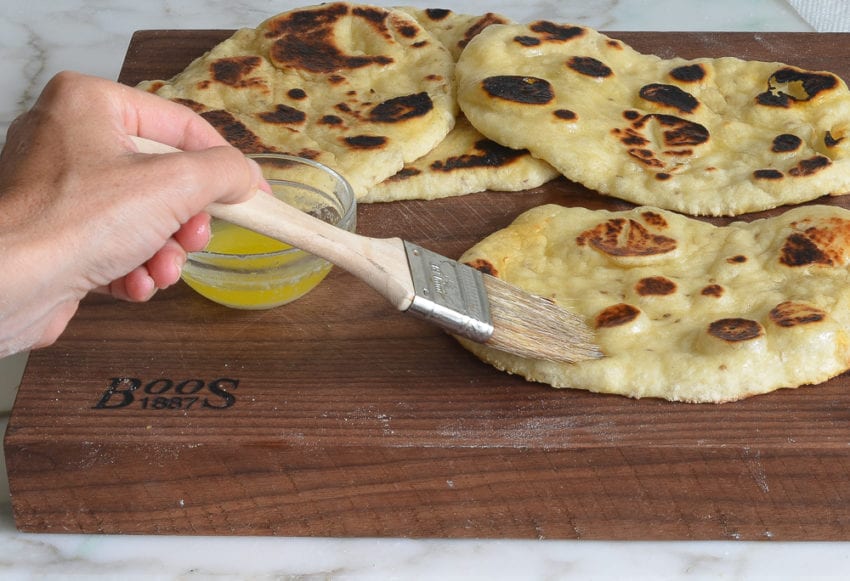
Sprinkle with parsley, if using, then serve warm.
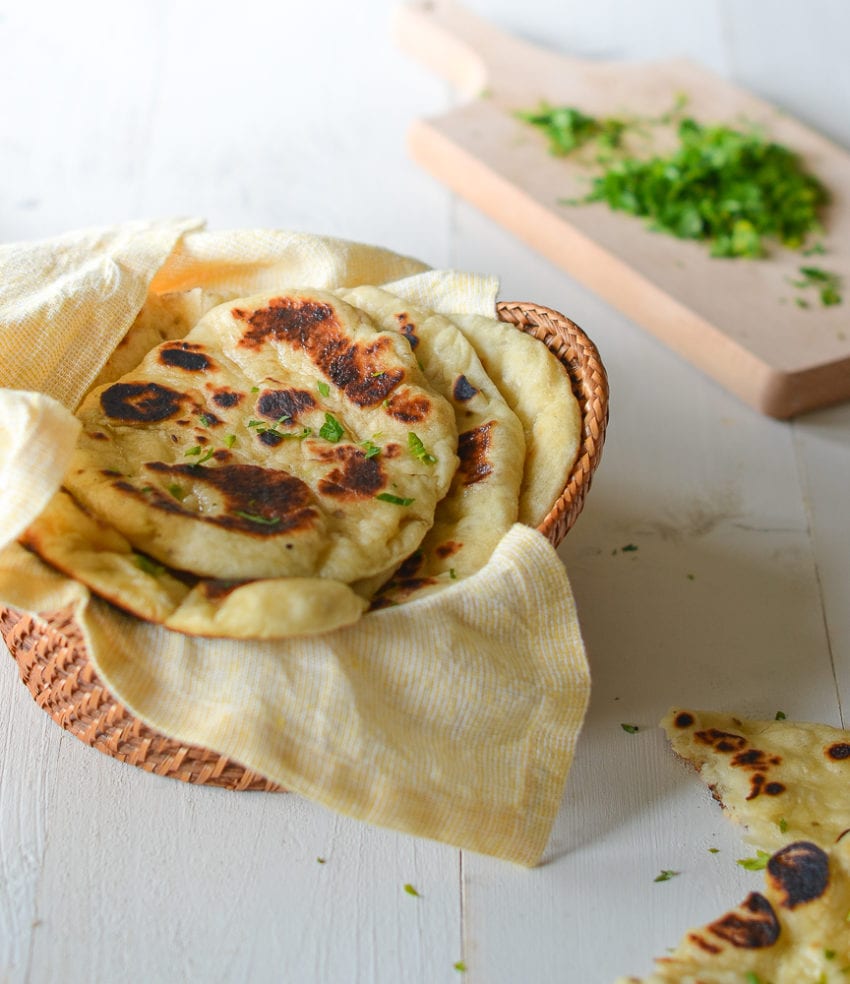
You may also like
Frequently Asked Questions
A: Depending on how far ahead you want to make the naan, you have a few options. If serving within one day, store the naan in resealable plastic bag at room temperature. For longer storage, wrap each piece of cooled naan securely in plastic wrap and put all the rounds in a sealable plastic bag, then freeze for up to 3 months. To reheat, wrap the naan in aluminum foil and warm in a 350°F oven until hot.
A: Instant yeast and active dry yeast are both types of yeast used in baking, but they have distinct differences. Active dry yeast has larger granules surrounded by a protective shell, which often requires it to be dissolved in warm water (a process known as proofing) before mixing with other ingredients. In contrast, instant yeast features finer granules without this protective layer, allowing it to dissolve and activate more rapidly. This means that instant yeast can typically be mixed directly into dry ingredients without the need for proofing.
A: Active dry yeast may be used instead of instant/rapid-rise yeast in this recipe, however, the dough will take longer to rise. To give active dry yeast a “head start” and speed things up, you can dissolve it in the lukewarm water and let it sit until frothy, about 10 minutes. After that, add it to the flour, sugar, salt, and anise seeds, and proceed with the recipe.
A: Sure! I’d add some minced garlic to some melted butter and brush it on the bread after it’s cooked.
Video Tutorial
Homemade Naan
Learn to make irresistibly soft and pillowy naan in your own kitchen with this simple recipe – it far outshines any store-bought version.
Ingredients
- 2 cups all purpose flour, spooned into measuring cup and leveled off with a knife, plus more for rolling (see note)
- 1 tablespoon sugar
- 1 teaspoon instant dry yeast/rapid-rise yeast (see note)
- 1 teaspoon salt
- Heaping ½ teaspoon anise seeds (optional)
- 3 tablespoons plain yogurt
- 2 tablespoons extra virgin olive oil
- ¾ cup warm water (about 100°F)
- 2 tablespoons melted salted butter, for brushing on finished naans
- 1 tablespoon chopped fresh Italian parsley (optional), for serving
Instructions
- In a large bowl, whisk together the flour, sugar, yeast, salt and anise seeds (if using). Set aside.
- In a medium bowl, whisk together, the yogurt, olive oil, and ¾ cup warm water (about 100°F). Add the yogurt mixture to the dry ingredients and mix with a fork. When the dough is about to come together, dust your hands with flour and knead gently into a soft, slightly sticky dough (sprinkle more flour, little by little, if the dough is too wet to work with). As soon as it comes together, stop kneading.
- Lightly oil or spray a clean bowl with nonstick cooking spray (the bowl should be large enough to allow the dough to double in size). Transfer the dough to the prepared bowl and cover with plastic wrap or a damp kitchen towel. Let sit in a warm place for 1 to 1½ hours, or until about doubled in size (hint: the warmer the spot, the faster the dough will rise).
- Fill a small bowl with about ½ cup flour. Dust a work surface with some of the flour and dump the dough on top. Sprinkle some of the flour on top of the dough and on your hands. Shape the dough into a long rectangle and cut into 6 equal portions, dusting with more flour as necessary so the dough doesn't stick. Roll each portion of dough in the bowl of flour to keep them from sticking.
- Warm a large cast iron or heavy nonstick pan over medium-high heat until very hot. Using a rolling pin, roll one of the dough balls into an oval shape about ⅛-inch thick (it should be about 9 x 4 inches). Pick up the dough and flip-flop it back and forth between your hands to release any excess flour; then gently lay the dough in the dry skillet and cook until the top is bursting with air bubbles and the bottom is golden and blackened in spots, a few minutes. Flip the naan and cook about 1-2 minutes more until the the bottom is lightly browned and blistered in spots. Remove the naan from the skillet and brush with melted butter. Place the naan in a tea towel-lined dish to keep warm. Repeat with the remaining naans, adjusting the heat lower if necessary as you go (I usually find it necessary to lower the heat to medium after the first naan). Sprinkle with parsley, if using, and serve warm.
- To keep the cooked naan warm, place them in a 200°F oven. Store leftovers in a Ziplock bag and reheat in a 350°F oven wrapped in foil.
- Note: I use King Arthur flour, which is higher in protein than some other all-purpose flours. If using a flour with a lower protein content, such as Gold Medal, you will likely need to add a few more tablespoons of flour.
- Note: Active dry yeast may be used instead of instant/rapid-rise yeast, however, the dough will take longer to rise. To give active dry yeast a boost, you can dissolve it in the lukewarm water and let it sit until frothy, about 10 minutes. After that, add it to the flour, sugar, salt, and anise seeds, and proceed with the recipe.
- Freezer-Friendly Instructions: The naan can be frozen for up to 3 months. Once it’s completely cooled, wrap each piece securely in plastic wrap and put all the rounds in a sealable plastic bag prior to putting in the freezer. To reheat, wrap the naan in aluminum foil and warm in a 350°F oven until hot.
Nutrition Information
Powered by ![]()
- Serving size: 1 naan
- Calories: 241
- Fat: 9 g
- Saturated fat: 3 g
- Carbohydrates: 35 g
- Sugar: 3 g
- Fiber: 1 g
- Protein: 5 g
- Sodium: 323 mg
- Cholesterol: 11 mg
This website is written and produced for informational purposes only. I am not a certified nutritionist and the nutritional data on this site has not been evaluated or approved by a nutritionist or the Food and Drug Administration. Nutritional information is offered as a courtesy and should not be construed as a guarantee. The data is calculated through an online nutritional calculator, Edamam.com. Although I do my best to provide accurate nutritional information, these figures should be considered estimates only. Varying factors such as product types or brands purchased, natural fluctuations in fresh produce, and the way ingredients are processed change the effective nutritional information in any given recipe. Furthermore, different online calculators provide different results depending on their own nutrition fact sources and algorithms. To obtain the most accurate nutritional information in a given recipe, you should calculate the nutritional information with the actual ingredients used in your recipe, using your preferred nutrition calculator.

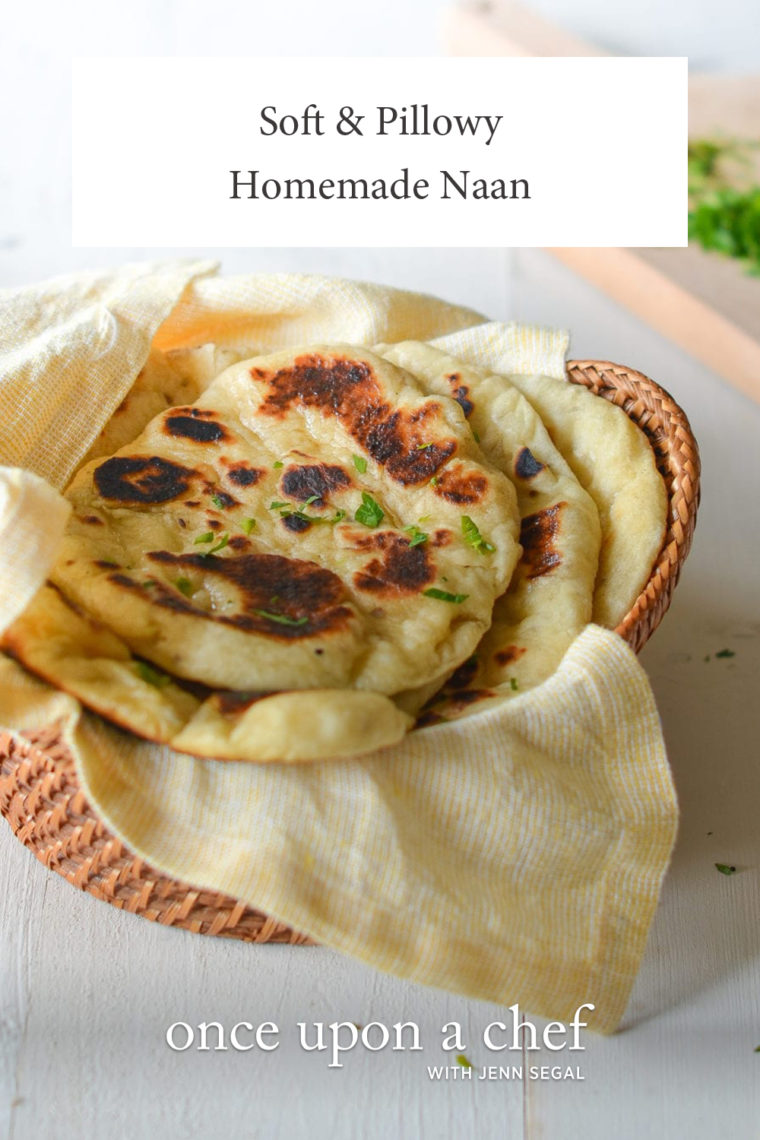

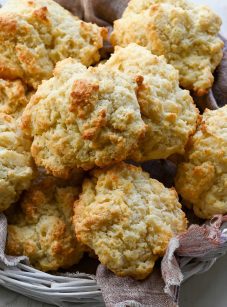
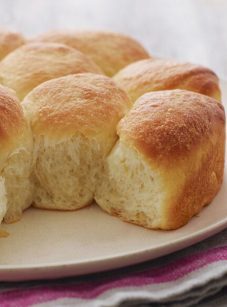
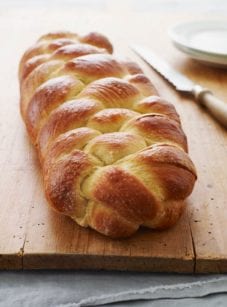
Wonderful! This was my introductory recipe to Once Upon a Chef! A coworker brought some naan in to lunch and i asked where she bought the smaller ones. When she told me she made them and offered me a sample, I was amazed. It was so much better than what I have been paying way too much for at Costco. She pulled up the site on her phone and ever since, I have been telling everyone. Do try this recipe. It is fabulous.
Hi Jenn! This recipe is terrific! The texture was nice and soft inside and the just the right amount of crisp on the outside. I didn’t use anise seeds, instead I used onion powder (kids don’t like the onion bits). The flavor was so good!
This recipe is so simple and really brings the meal together! Everyone is always impressed that the naan is homemade! The recipe is straight forward and as long as you follow it it comes out perfect every time! To change it up I like to add cumin seeds or everything bagel mix instead of the caraway seeds! This goes great with butternut squash curry!! Thanks again for a stellar recipe!
Hi. I can’t wait to try this recipe. Can I make this in my stand mixer. Thanks Debbie
Yes Debbie, that should work. Enjoy!
My first time making naan to go along with a curry I made. I hand-stretched the dough and tried both a cast iron skillet on the stove and a terracotta saucer I use as a pizza stone – I was happier with the cast iron as it held more heat to brown the naan. It’s every bit as good or better than what I would order at an Indian restaurant and certainly better than store bought! I did an overnight rise in the fridge, and I baked them when I came back home.
I also experimented a little – I made another batch with a mix of dry beer yeast I had mixed with some rinsed yeast slurry from a beer I made(I rinsed the slurry to get rid of any bitterness from hops residue), while that didn’t rise in the fridge as much as the one made with active dry yeast, it also made for a delicious naan. Just a slight flavor difference.
Have recently found your website and really enjoying it. Recipes are always really clear to follow and really appreciate the progress photos along the way so I know what its
meant to look like 🙂 This was a hit with all the family including the hubby so will definitely be making again. Thanks for a great resource and looking forward to your book launch. I’m sure it will be worth the wait!
Hi Jenn! Thanks for all the great recipes. I really want to try to make naan for the next time I make your chicken tikka masala, but I seem to have a problem with the ingredients. I live in Norway, and I have never heard of active dry yeast before. The only thing we have in the grocery store is fresh yeast, and what I think equates to instant active dry yeast. It’s just called dry yeast (tørr gjær), and is a fine powder you mix with the dry ingredients when baking. Can I substitute the active dry yeast with fresh yeast? Or do you think our regular ‘dry yeast’ could possible work?
Hi Elise, I wasn’t familiar with fresh yeast (I looked it up). I think that should work here, but the rise time may be a little different, so keep your eye on it. Here’s some more information that may be helpful. LMK how they turn out!
Thanks for the quick response, Jenn! I have made them twice now, once with the fresh yeast and once with the dry yeast we have here. Both turned out great! I don’t believe I could really detect much difference between them, but I will use the fresh yeast when I have it on hand. Great recipe, we loved the naan!
So glad!
A beloved staple in our home! I love making it for guests too. I’ve successfully doubled the recipe without any issues. I’ve never added the melted butter at the end, and it’s always tasted amazing! In addition to soups and curry, we enjoy this with some marinated grilled chicken. Very tasty and filling sandwiches!
Love this bread – it’s so easy and it is delicious. I’ve made it several times now, and made it a few different ways – with or without the anise, and I tried adding garlic and cilantro into the dough (that turned out delicious also). This is a wonderful recipe.
LOVED this recipe. Simple, delicious, and easy to follow!